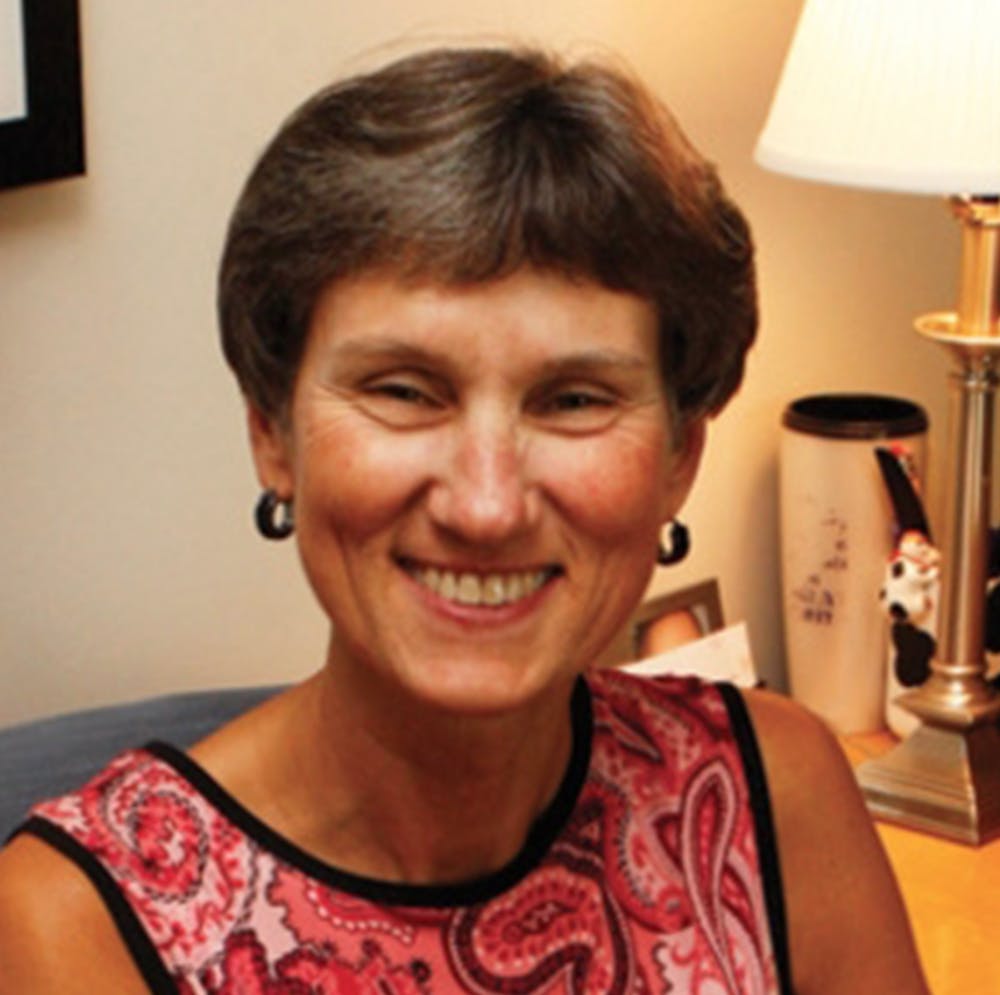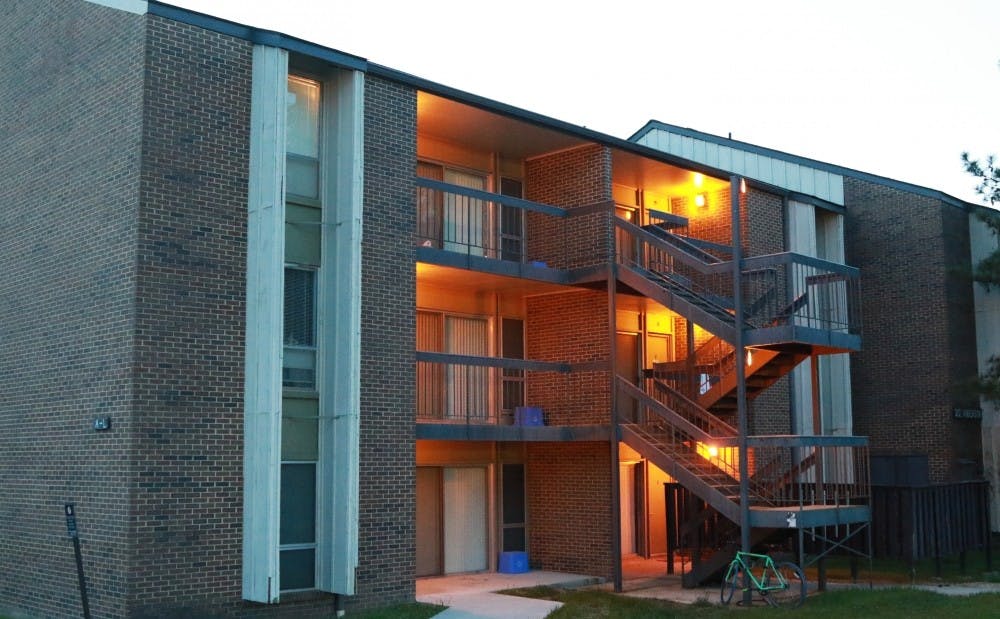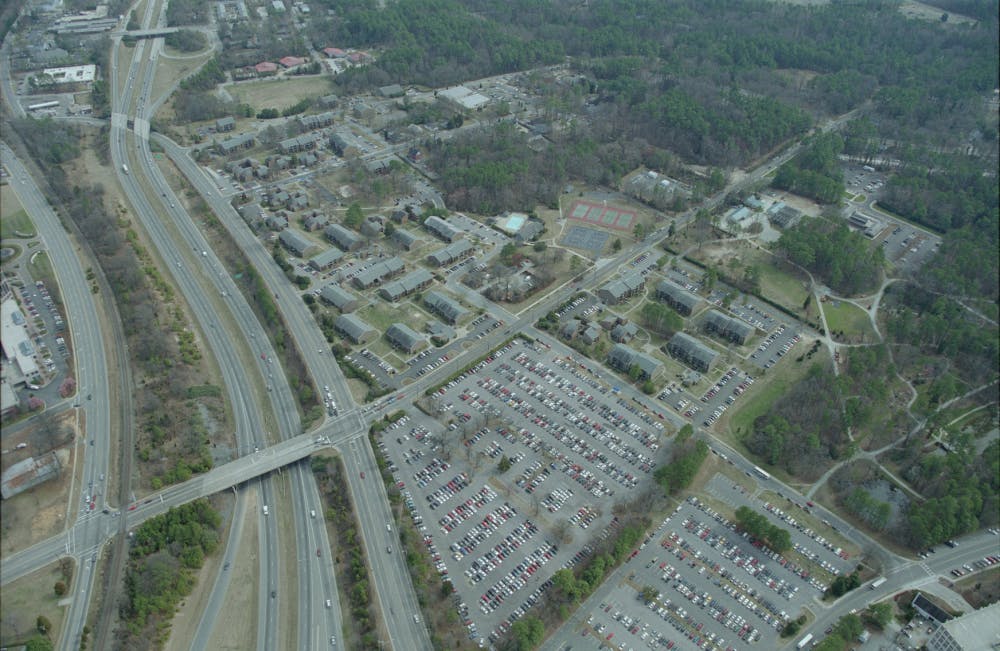It’s clear from student conversations that Central Campus might not be a desirable place to live. Whether they’re posting on Fix My Campus about the mold, bemoaning the distance between Central and literally anything else at Duke or complaining about poor security, most undergraduates are tired of it.
Something less known? Administrators think Central is shabby and crumbling as well. And they’re equally ready to see it go.
“We’ve known from the day I arrived that Central Campus was done, that those buildings are ready to be retired,” said Larry Moneta, vice president for student affairs, who came to Duke in 2001. “The money we put into them was just to keep them going until we could build something new.”
There’s a common saying among administrators, which Moneta attributed to Executive Vice President Tallman Trask—Central Campus isn’t a campus and it’s not really central to anything.
As the University prepares to eliminate all student housing from Central by summer 2019, we examined the campus' evolution—a tale that reveals how shifting demographics and undergraduate needs shaped student life on Central until it ultimately became too battered to repair.
Graduate student dwellings
Central Campus began its life at Duke in the 1970s as a location for graduate and professional student housing.
Dean of Students Sue Wasiolek explained that Central was built in an apartment style to accommodate the needs of graduate students and their families. The variation in sizes—one to three bedrooms—meant that married couples with kids as well as childless students could live there.
A 1970s-era flyer from the Duke Archives advertising Central Campus notes that the 500-unit complex was completed in 1975, incorporating a “college atmosphere” architecture with “a mixture of brick veneer and wood siding exterior treatment.”
It says that Central “provides a total student community by housing single and married students representing all segments of Duke University.” Listed apartment features include electric hot air, seasonal air cooling, balconies or patios, master TV antennas, spacious grounds and convenient laundry facilities.
When Wasiolek was an undergraduate at Duke—she first arrived on campus in 1973—Central was a desirable place, especially for graduate students from different countries and for those who didn’t have cars. These students could use the campus bus system, which connected Central to the rest of Duke as it does today, and could walk to a grocery store on Ninth Street. Or residents could take the bus to East Campus and walk to Northgate Mall.

“Central Campus provided a number of conveniences on and off campus for graduate and professional students,” Wasiolek said. “Ninth Street was here, and Durham was vibrant at that time in a different way than it is currently.”
She noted that there weren’t many other housing options for graduate students at the time and the prices of Central apartments matched students’ budgets.
That all changed as Duke’s enrollment numbers began to creep up in the next two decades and the University suddenly needed more housing. Soon undergraduates were housed on Central along with the graduate students.
Moneta explained that Duke was thoughtful about separating the two groups, making a different section for graduate students that would be quieter.
“There was a recognition that families might need a different section,” Wasiolek said. “Then enrollment creep just eventually took over all of Central.”
She noted that there was some pushback from the graduate students who were being phased out. But new apartments in Durham were beginning to emerge and some graduate students thought there were better, off-campus places to live.
As space for graduate students became even more limited, Duke began giving priority to graduate international students, especially the first-years, who might have difficulty arranging other living conditions from abroad.
“It’s always been important for us to have beds for that student who just didn’t have the capacity to make that arrangement in advance,” Moneta said.
Graduate students continued to occupy Central in small numbers until as late as last year, he noted, when the University began closing locations on Central in preparation for phasing out the entire campus. He added that the sole graduate housing was located on 300 Swift, but these buildings only included 50 to 60 beds—a small number compared to the more than 8,000 graduate and professional students at Duke.
'Where poor kids lived'
When undergraduates moved onto Central, they did so as individual apartment dwellers, not as “groups” of students like the selective living groups and Greek organizations that make up Central today, Wasiolek explained.
She noted that Central was appealing to some because it gave a sense of independence and included kitchens. Another common reason? It cost less.
The campus ended up being a place for students from low socioeconomic status, who paid less for their apartments than they would for dorms on West and could also save money by cooking for themselves and purchasing a smaller meal plan.
Janet Dickerson, former vice president of student affairs from 1991 to 2000, said that when she arrived at Duke, there were 19 different housing rates. Students would choose where they wanted to live based on the location’s desirability along with the price.
“West Campus was the Upper East Side, and East Campus was at that time where people lived if they didn’t get West but wanted to be in residence halls,” she said. “Central Campus was a location for students on financial aid or trying to be financially conservative.”
Steve Nowicki, dean and vice provost for undergraduate education, noted that when he arrived in 1989, Duke had “a very tiered housing system." Central was a place where students from families who made less money—many of them students of color—ended up having to live.
“At that time, it was clear that there was self-segregation along socioeconomic status lines which often mapped onto race and ethnicity,” he said. “Central Campus was where poor kids lived, and that was a problem.”
To remedy the issue, Duke began looking more critically at its financial aid policies. At the time, the University would give students an average housing allowance in their financial aid packages, which wouldn’t always cover the entire cost of housing.
But Nowicki said that in 2007, the policy changed to give students the exact amount of money they will be charged for housing that year.
“If a student lucks out and gets the most expensive air-conditioned room on campus, Duke will pay for it,” he said. “That was a really important change in financial aid, which changed how Central was used.”
Dickerson noted that when she left the University in 2000, Central was a place students enjoyed for its apartment-style facilities and was “less of a ghetto than when I first arrived.” She also worked with other administrators to make campus housing feel more inclusive. Part of this involved housing all first-year students on East Campus—a change that occurred in 1995—to form a closer community.
But concerns regarding Central’s place in the University ecosystem remained.
“There were questions about the quality of housing, especially compared to East and West,” Dickerson said. “There were definitely issues associated with having campus feel as if it was divided based on income that we wanted to alleviate.”
A new residential model
Moneta explained that soon after he got to campus, Duke tried out a “developmental sequence” in housing—all first-years lived on East, sophomores lived on West and juniors and seniors on Central.
At this point, about 200 graduate students were left on Central, meaning the age difference between them and the undergraduate population was narrower than it would have been with first-years and sophomores. However, this model didn’t last for long.
“We tried it for a little while, but the notion that all sophomores are alike and less mature than all juniors and seniors doesn't hold,” Moneta said.
The better solution was a move to the residential house model, which was implemented in 2012 and is still used today. In this system, each student is part of a “house”—sections of dorms on each campus that can be Greek, SLG or independent and are meant to foster a sense of community. Students who live in a house they like can request “right of return” to live there again the following year.
Nowicki explained that prior to this system, groups like fraternities and some selective living groups like Brownstone and Roundtable “owned” space on West Campus. They could choose to return each year, while students not in these groups had to go through the housing lottery every single year.
“That was an extraordinary privilege,” he said. “All the other students were treated like hermits and nomads. If you were in a place you liked, it didn’t matter.”
This also led to clusters of rooms between fraternity sections where independent students would get stuck, with little chance for developing a community with their neighbors. The new system shuffled the deck, Moneta explained, distributing selective groups equally across Central and West Campus.
During this transition, Panhellenic Association sororities came to the administration with a request—they wanted housing too.
“The women came forward and said, ‘we’ve never had housing’ to which we said ‘you’ve never wanted housing,’” Moneta said.

Prior to that point, Nowicki said, sororities enjoyed not having housing because of the intersectional nature of sorority life at Duke. Female students could join Greek life while still having friends outside the system.
Moneta said that he always thought the sororities were smart in not wanting housing because it would’ve just added another competitive dynamic. But at this time, they felt that it was their chance to claim a piece of campus real estate.
The administration suggested they distribute their sections across Central and West, but the sororities insisted they all be on the same campus to have the same living quality, Moneta explained. Since West Campus couldn’t fit them all, Central became the chosen spot.
Nowicki noted another factor that may have led to sororities requesting the same campus and housing conditions—the social hierarchy.
“The students who were leaders at the top of hierarchies understood that if some sororities had housing and others didn’t, then it would accentuate the hierarchy,” he said. “Then the organization at the bottom loses members and goes away and that eats the chain up and it goes away.”
Duke also incentivized fraternities and other selective living groups to move to Central by offering perks like renovated rooms, common areas and flat screen TVs. Nowicki noted that even though students traditionally like West Campus for its Gothic architecture, some of the rooms “are really crappy.” Some fraternities recognized this and jumped at the chance to live on Central.
“That was the next big change in dynamics on Central because it meant that Central was overpopulated by Greek students,” Moneta said. “It wasn’t a good thing or bad thing, it was just a thing.”
As part of the shift to this housing model, administrators also decided to give Central a facelift. The area in the middle of Central Campus now called “Mill Village” was built, adding a restaurant, convenience store and gym along with a basketball court and soccer fields.
Duke also did renovations on the apartment buildings, mostly cosmetic work that resulted in a fresh interior with new carpeting and upgraded appliances. Nowicki noted that this bought them some extra time with Central, giving them an “okay” feeling about it.
“It was an interesting brief period,” he said. “It was a little bit better than putting lipstick on a pig, but it was fixing up something that even we knew back then wasn’t going to last forever.”
The transformation that never was
If everything had worked out as planned, Central wouldn’t have just gotten a facelift—it would’ve become an entirely new campus.
Wasiolek explained that Duke initially had a plan called the “New Campus” that would rejuvenate Central, with a residential focus but also arts and theater buildings and space for classrooms and recreation.
This went through several iterations, Moneta noted. One version proposed tearing down current Central housing and rebuilding on the same plot of land, while another planned to bring the campus closer to Campus Drive. Everyone wanted to make student housing more cohesive, he said.

In one version, the development would have extended from the Chapel Circle to the Nasher Museum of Art, costing the University $800 million, Nowicki said.
Then the 2008 recession hit, plans were put on hold, and the New Campus never materialized.
Moneta noted that the delays allowed Duke to mature its thinking about the role of Central at the University. Eventually, the administration agreed that bringing the students living on Central Campus to West Campus would create a more dense, vibrant community.
“We came from let’s replace Central on Central to let’s replace Central on Campus Drive to let’s bring Central right into West Campus,” he said.
Retiring Central and moving forward
Nowicki emphasized that Central was never meant to last as long as it has. As he understands it, the campus was built with the knowledge that it would only last 30 years.
But why would Duke build structures to only last for three decades when the architectural marvels on West Campus have been around at least three times that long?
Wasiolek said it’s not unusual for universities to construct buildings expected to only last a certain period of time. The school may change and have new demands over time, which she said has certainly happened at Duke.
Moneta has a different theory—buildings with a 30-year shelf life were all Duke could afford as its undergraduate population rapidly expanded.
“I’m going to guess the answer is at that time Duke was a poor school, extraordinarily ambitious, needed the beds and did what they had to do,” he said. “Gothic stone buildings are outrageously expensive.”
It wasn’t until last year though that the Board of Trustees decided to bite the bullet and close Central, which Nowicki said he and Moneta had been advocating for years.
“The decision was made that Central had provided to all of us its useful life, but that its useful life had come to an end, and it made no sense to continue to try to renovate it,” Wasiolek said.
Nowicki noted that if it were up to him, he would’ve closed Central a long time ago.
“I can say that because it’s not my responsibility to look at financial issues,” he said. “Eventually, the cost-benefit analysis led us to say we just have to close it.”
The current plan is to move the 1,000 beds on Central onto the The Hollows on West Campus, currently undergoing construction but expected to hold about 500 beds, or the newly-purchased 300 Swift Apartments. If all goes according to plan, Central Campus should be retired by 2019.
But eventually the University wants to bring everyone onto West. Moneta explained that the next plateau is finding a way to add 500 more beds, allowing Duke to cease housing students in the 300 Swift apartment complex.
In the meantime, Moneta noted that keeping Central alive while finalizing replacement housing on West will be “a rush to the finish.” Between dilapidated buildings and mold, Central is fading fast.
But after Central ceases to house undergraduates, what will become of the land at the heart of Duke? Moneta said the plan is to use it not as academic space but to support Duke’s “broader initiative.” This could mean leasing it to private developers who could turn it into office or retail space, generating money for Duke.
His preference, though, is to return Central to its roots, bringing campus full-circle.
“For me, the number one need is housing for graduate students,” he said. “It’s certainly beautifully positioned for graduate student housing to be that close to campus.”
Get The Chronicle straight to your inbox
Signup for our weekly newsletter. Cancel at any time.

